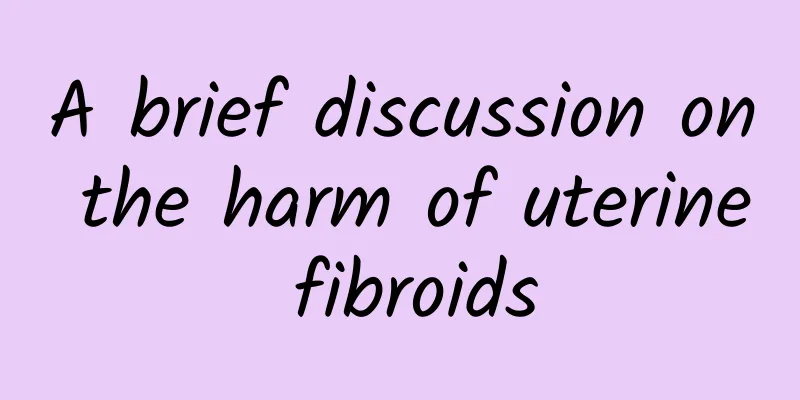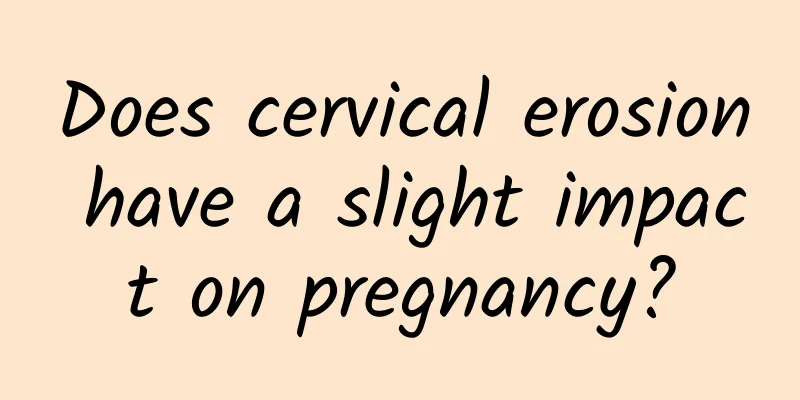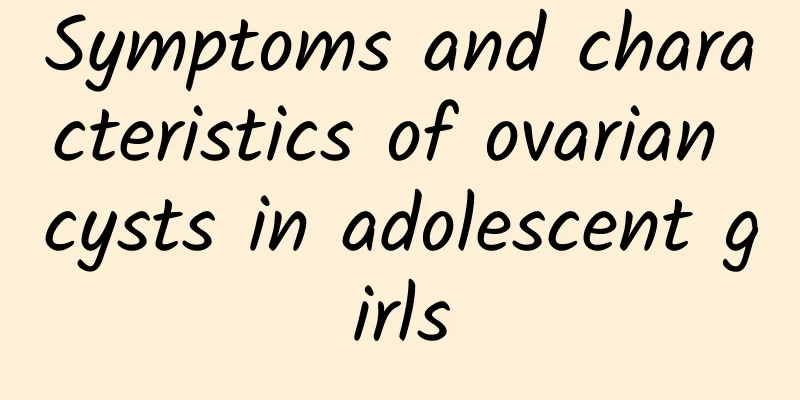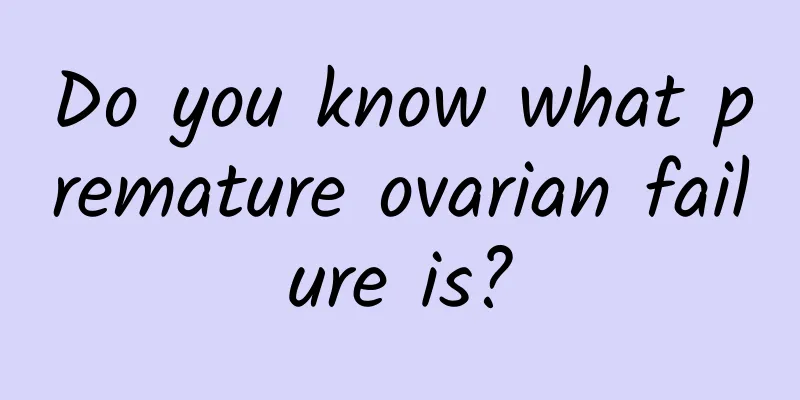A brief discussion on the harm of uterine fibroids

|
Uterine fibroids are a common benign tumor in middle-aged and elderly women. The highest incidence rate is usually seen in women aged 40 to 50, but in recent years, there has been a trend of gradually becoming younger. After women enter menopause, as the estrogen secretion of the ovaries gradually decreases, uterine fibroids also begin to shrink. Therefore, women after menopause are not at high risk of uterine fibroids. Since uterine fibroids are so common among women, what are the hazards of uterine fibroids? Let's listen to the experts' introduction. What are the dangers of uterine fibroids? 1. Infertility or miscarriage Uterine fibroids patients suffer from infertility due to the compression of fallopian tube entrance by fibroid tissue in the uterine cornu, which causes the uterus to deform and hinders the implantation of fertilized eggs. In addition, statistics show that the spontaneous abortion rate of fibroid patients is also higher than that of normal people, with a ratio of 4:1. 2. Adhesion or inflammation After the subserosal uterine fibroid pedicle is twisted, intestinal adhesions will occur, which will be infected by intestinal bacteria. The inflamed fibroids will adhere to the uterine appendages, causing suppurative inflammation. On the other hand, fibroids can also cause pathogenic bacteria to invade other uterine organs due to bleeding, causing gynecological inflammation such as adnexitis and pelvic inflammatory disease. 3. Secondary anemia Uterine fibroids can cause excessive menstrual bleeding, which over time can cause secondary anemia and even anemic heart disease. In severe cases, patients may experience general fatigue, pale complexion, palpitations, and shortness of breath. 4. Free fibroids Subserosal uterine fibroids can twist at the pedicle, causing acute abdominal pain. In severe cases, if surgery is not performed immediately, the pedicle may be broken and a free fibroid may form. Of course, the twisted fibroids can also drive the entire uterus, causing axial torsion of the uterus (mostly near the internal opening of the cervical canal). 5. Infection and suppuration Uterine fibroids can cause pelvic congestion and infection, which is mostly caused by the torsion of the tumor pedicle, while blood-borne infection is extremely rare. After infection, a few patients will form abscesses in the tumor tissue, while the rest will show purulent symptoms. What are the hazards of uterine fibroids? I believe that after reading the above content, you have a certain understanding of the hazards of uterine fibroids, so don't ignore the hazards of uterine fibroids. If you have other questions, please consult our online experts, who will answer you more professionally. Uterine fibroids topic: http://www..com.cn/fuke/zgjl/ |
<<: What are the symptoms of uterine fibroids?
>>: What are the dangers of uterine fibroids?
Recommend
Causes of pelvic inflammatory disease
Causes of pelvic inflammatory disease: The causes...
Women should know the diagnosis method of cervical hypertrophy
Women should pay more attention to the disease of...
Is the treatment of uterine fibroids expensive?
Is the treatment cost of uterine fibroids expensi...
Do you know what pelvic inflammatory disease is?
The emergence of gynecological diseases has disru...
How is vulvar itching spread?
Vulvar itching is not a sexually transmitted dise...
Will pelvic inflammatory disease be cured by hanging water for 5 days?
Will pelvic inflammatory disease be cured by hang...
5 bowls of calories are equal to 1 bowl of rice! The popular "cauliflower rice" abroad
White rice is a staple food for many people for t...
What should I do if my menstruation has not come for a long time?
If menstruation is not coming, first exclude earl...
Experts explain several symptoms of chronic pelvic inflammatory disease
Chronic pelvic inflammatory disease develops from...
Subserosal fibroids are one of the classification symptoms of uterine fibroids
Perhaps many female friends do not understand ute...
How many days after abortion can I go out?
Abortion is artificial miscarriage. If the recove...
Can ovarian cysts cause ovulation? What are the hazards?
Can ovarian cysts lead to ovulation? What other h...
Experience with prescriptions and medicines for the treatment of amenorrhea
Amenorrhea refers to the pathological absence of ...
【Video version】Will drinking water make you fat? Doctor: 4 tips to lose weight by drinking water and avoid gaining weight again
Are you hitting a wall when losing weight, and do...
How does vulvar itching affect conception?
Does vulvar itching have any impact on female pre...









